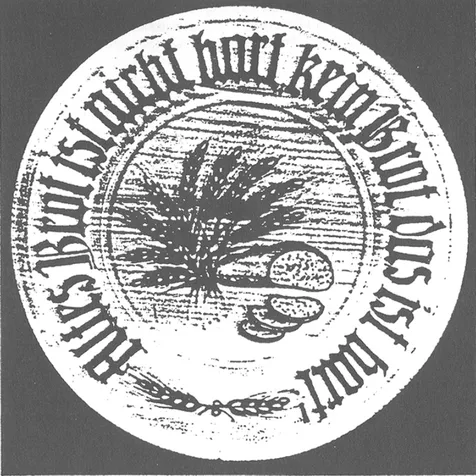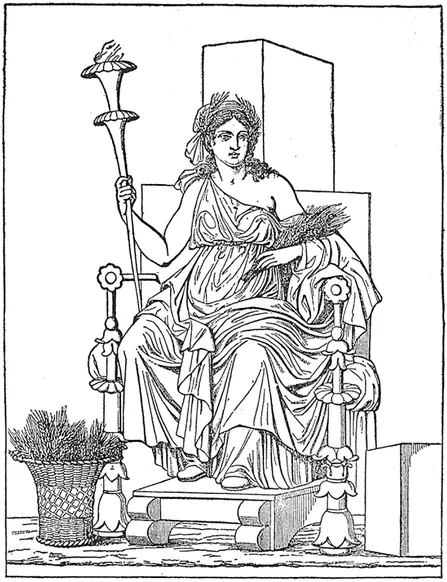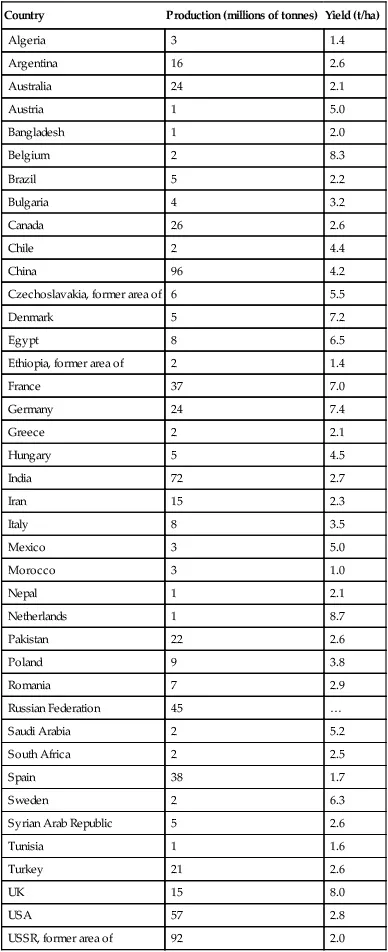
Wheat: Chemistry and Technology
Khalil Khan
- English
- ePUB (apto para móviles)
- Disponible en iOS y Android
Wheat: Chemistry and Technology
Khalil Khan
Información del libro
Wheat science has undergone countless new developments since the previous edition was published. Wheat: Chemistry and Technology, Fourth Edition ushers in a new era in our knowledge of this mainstay grain. This new edition is completely revised, providing the latest information on wheat grain development, structure, and composition including vital peer-reviewed information not readily available online.
It contains a wealth of new information on the structure and functional properties of gluten (Ch. 6), micronutrients and phytochemicals in wheat grain (Ch. 7), and transgenic manipulation of wheat quality (Ch. 12). With the new developments in molecular biology, genomics, and other emerging technologies, this fully updated book is a treasure trove of the latest information for grain science professionals and food technologists alike.
Chapters on the composition of wheat—proteins (Ch. 8), carbohydrates (Ch. 9) lipids (Ch. 10), and enzymes (Ch. 11.), have been completely revised and present new insight into the important building blocks of our knowledge of wheat chemistry and technology. The agronomical importance of the wheat crop and its affect on food industry commerce provide an enhanced understanding of one of the world's largest food crop.
Most chapters are entirely rewritten by new authors to focus on modern developments. This 480-page monograph includes a new large 8.5" x 11" two-column format with color throughout and an easy to read style.
Wheat: Chemistry and Technology, Fourth Edition provides a comprehensive background on wheat science and makes the latest information available to grain science professionals at universities, institutes, and industry including milling and baking companies, and anywhere wheat ingredients are used. This book will also be a useful supplementary text for classes teaching cereal technology, cereal science, cereal chemistry, food science, food chemistry, milling, and nutritional properties of cereals. Cereal and food science graduate students will find Chapter 1 – "Wheat: A Unique Grain for the World" particularly helpful because it provides a succinct summary of wheat chemistry.
Preguntas frecuentes
Información
Wheat: A Unique Grain for the World
| Country | Production (millions of tonnes) | Yield (t/ha) |
| Algeria | 3 | 1.4 |
| Argentina | 16 | 2.6 |
| Australia | 24 | 2.1 |
| Austria | 1 | 5.0 |
| Bangladesh | 1 | 2.0 |
| Belgium | 2 | 8.3 |
| Brazil | 5 | 2.2 |
| Bulgaria | 4 | 3.2 |
| Canada | 26 | 2.6 |
| Chile | 2 | 4.4 |
| China | 96 | 4.2 |
| Czechoslavakia, former area of | 6 | 5.5 |
| Denmark | 5 | 7.2 |
| Egypt | 8 | 6.5 |
| Ethiopia, former area of | 2 | 1.4 |
| France | 37 | 7.0 |
| Germany | 24 | 7.4 |
| Greece | 2 | 2.1 |
| Hungary | 5 | 4.5 |
| India | 72 | 2.7 |
| Iran | 15 | 2.3 |
| Italy | 8 | 3.5 |
| Mexico | 3 | 5.0 |
| Morocco | 3 | 1.0 |
| Nepal | 1 | 2.1 |
| Netherlands | 1 | 8.7 |
| Pakistan | 22 | 2.6 |
| Poland | 9 | 3.8 |
| Romania | 7 | 2.9 |
| Russian Federation | 45 | … |
| Saudi Arabia | 2 | 5.2 |
| South Africa | 2 | 2.5 |
| Spain | 38 | 1.7 |
| Sweden | 2 | 6.3 |
| Syrian Arab Republic | 5 | 2.6 |
| Tunisia | 1 | 1.6 |
| Turkey | 21 | 2.6 |
| UK | 15 | 8.0 |
| USA | 57 | 2.8 |
| USSR, former area of | 92 | 2.0 |

WHEAT AND PEOPLE
Wheat and Human Origins
DEITIES OF WHEAT

| Family or Tribe | Genus and Species | Common Names | World Productiona (millions of tonnes) | |
| Monocotyledonous plants | ||||
| Triticeae | Triticum aestivum | Common (bread) wheat |  | 626 (all wheat) |
| Triticeae | Triticum durum | Durum (macaroni) wheat | ||
| Triticeae | xTriticosecale sp. | Triticale | 13 | |
| Triticeae | Secale cereale | Cereal rye | 15 | |
| Triticeae | Hordeum vulgare | Barley | 138 | |
| Aveneae | Avena sativa | Oats | 25 | |
| Andropogoneae | Sorghum bicolor | Sorghum | 57 | |
| Andropogoneae | Zea mays | Corn, maize | 692 | |
| Oryzeae | Oryza sativa | Rice |  | 615 (as paddy) |
| Oryzeae | Zizania aquatica | Wild rice | ||
| Eragrostideae and Paniceae | Several genera a... | |||
